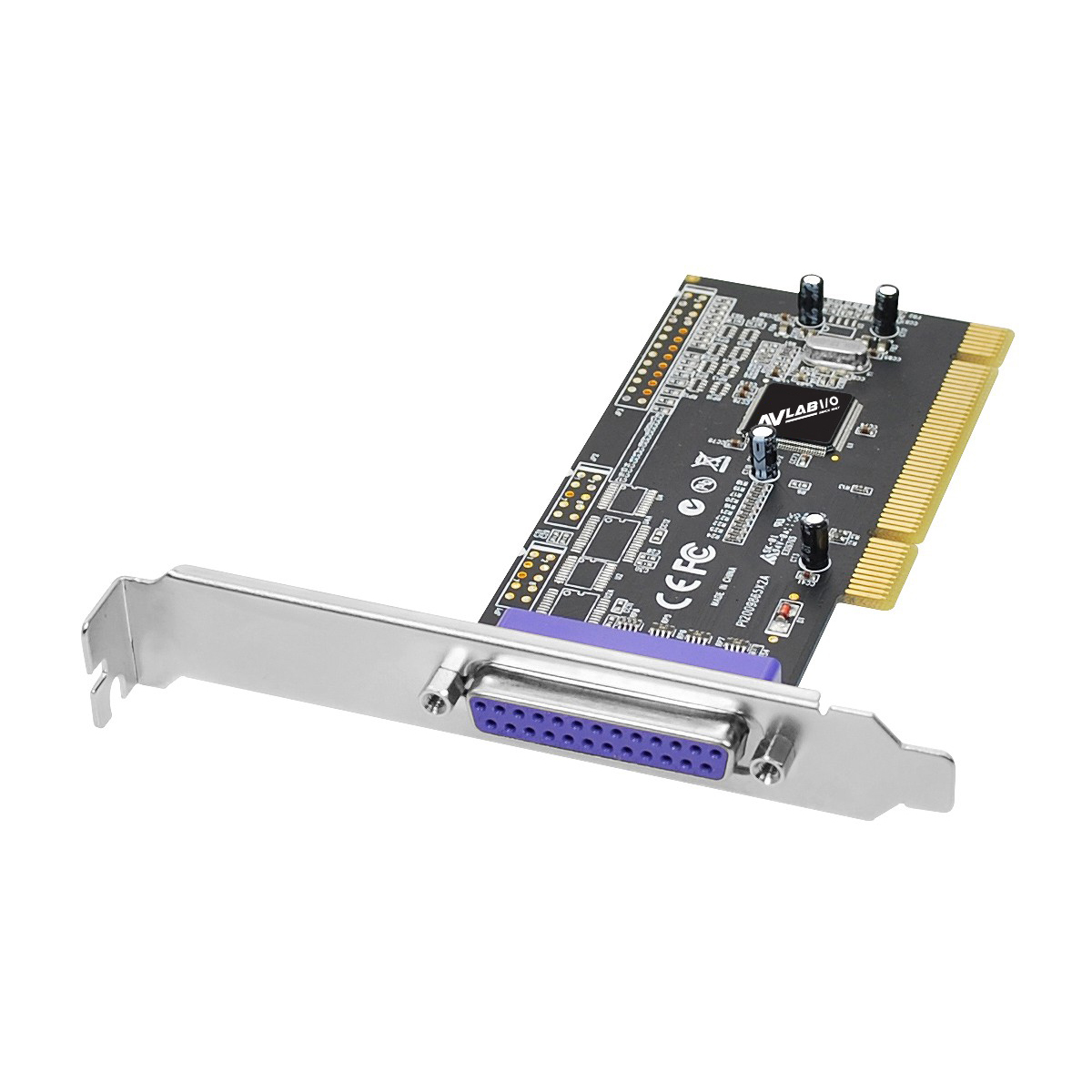- AVLAB-JJ18-1
- AVLAB 2-Port Parallel PCI, ECP/EPP/SPP/PS2, DB25 Port, Dual Profile Bracket
■ Adds 2 ECP/EPP parallel ports to your PCI enabled system ■ Can be installed in 32-/64-bit, 3.3v/5v PCI and PCI-X slot ■ Dual Profile design to install in standard height or low profile chassis with included brackets
Highlights
EXPANSION
Adds 2 ECP/EPP parallel ports to your PCI enabled system
SUPPORTS PCI AND PCI-X SLOTS
Supports 32-/64-bit, 3.3V/5V PCI and PCI-X slots
FULL HEIGHT AND LOW PROFILE SUPPORT
Installs in full height and low profile chassis with included brackets
Specification
Chipset: ASIX (Moschip) MCS9865
Compliant with PCI Local Bus Specification, Revision 2.3
Interface: 32-bit PCI
Compliant with IEEE 1284-1994 parallel port standard
Supports ECP, EPP, PS2, and SPP parallel port modes
Supports data transfer rates up to 1.5 MB/s
Full support for DOS- and Windows-based software
PCI IRQ sharing feature reduces IRQ conflicts
Ports: 2x parallel ports (DB25 - female)
Environmental conditions
■ Operating temperature: 32 to 122 degrees F (0 to 50 degrees C)
■ Operating humidity: 20% to 80% RH
■ Storage temperature: -4 to 140 degrees F (-20 to 60 degrees C)
■ Storage humidity: 10% to 90% RH
Certifications/Standards: FCC, CE, RoHS
Warranty: Lifetime limited
Country of origin: China
Download
- AVLAB-JJ18-1_Driver_for DOS Windows 2000 Windows 7 (32-bit) Windows 7 (64-bit) Windows 8 (32-bit/64-bit) Windows 95 Windows 98 Windows 98SE Windows ME Windows Server 2003 (32-bit) Windows Server 2003 (64-bit) Windows Server 2008 (32-bit) Windows Server 2008 (64-bit) Windows Vista (32-bit) Windows Vista (64-bit) Windows XP (32-bit) Windows XP (64-bit)
- AVLAB-JJ18-1_Driver_for Windows 10 (32-bit) / 8.x (32-bit) / 7 (32-bit) / Vista (32-bit) / XP (32-bit)
- AVLAB-JJ18-1_Driver_for Windows 10 (64-bit) / 8.x (64-bit) / 7 (64-bit) / Vista (64-bit) / XP (64-bit)
- Quick Installation Guide
FAQ
- How do I confirm that Windows detects my expansion card?
- To confirm that Windows detects your expansion card, complete the following: Press the Windows key+R, type devmgmt.msc, and press Enter. In Device Manager, under the appropriate heading, confirm that your expansion card is listed and that there isn't an exclamation mark next to it. For example, a RS-422/485 controller card would be under Ports (COM & LPT)
- How do I confirm that Windows detects my USB device?
- To confirm that Windows detects your USB device, complete the following: Press the Windows key+R, type devmgmt.msc, and press Enter. In Device Manager, under the appropriate heading, confirm that your expansion card is listed and that there isn't an exclamation mark next to it. For example, a USB device would be under Universal Serial Bus controllers.
- How can I make sure my serial port is working in Windows?
- To check whether or not an RS-232 serial port is working, perform an RS-232 loopback test by doing the following: If your serial port is not female, convert it by taking a female/female cable or gender changer and plugging it into the serial port. Take a metal paperclip or wire and cross pins 2 and 3. If you look closely at the female end, the pins should be numbered. Open a telnet session on the COM port number of the device that you are testing. Note: To open a telnet session on the COM port, you need a telnet client like PuTTY or Hyper Terminal. Windows XP comes with Hyper Terminal. When the session is open, anything you type into it you should see. The loopback test fails when you cannot see what you are typing. If the loopback test fails, make sure that the serial cable or gender changer that you are using works and that the adapter is in the correct port.





